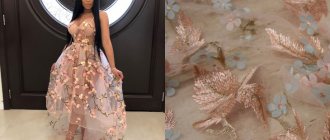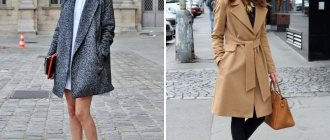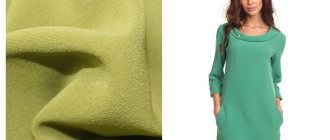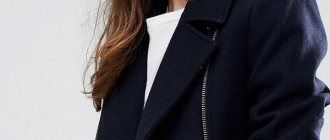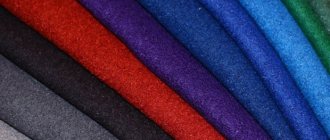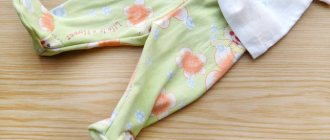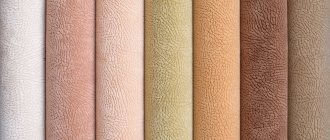Nowadays the world is captured by the fashion for everything natural, environmentally friendly and as comfortable as possible. It is these three concepts that are most characteristic of a fabric such as linen. Linen fabric has a very rich history; it appeared more than 5 thousand years ago. No one knows who exactly was the first to use flax to make fabric. It is known that in Switzerland fishing nets and ropes for hunting were woven from fiber. In ancient times, linen was the fabric of the rich; Egyptian and oriental craftsmen achieved special skill in its production.
Now linen is one of the most versatile and popular natural products. It is used to make many products used in various spheres of human life. In this article we will dwell in more detail on the technique of creating matter, its features, types, pros and cons.
Linen - description of the fabric
A material with its own characteristics. Flax is quite difficult to grow and process. We will talk further about how it is done and what it is.
Flax production
It grows only in temperate climates with good humidity. In order for it to grow well, the temperature should be moderate and the daylight hours should be long.
In the CIS countries, flax is practically not grown, since for many farms this crop is unprofitable.
There are many types and subspecies of flax, but only spinning flax (also known as long flax) is used for production. This culture has been used in the woven industry for a long time; the technology for making the material is also very ancient.
It is more difficult to grow and produce flax than cotton, which is why it costs more.
It is noteworthy that even now they are made using the same technique. Except that production has become a little automated.
Made this way:
- Collecting plants with a combine and grinding them into straw.
- Spreading straw on the field for 2-3 weeks. During this time, the flax is saturated with dew and separates its fibrous part, which is called trusta.
- Straw collection, drying and mechanical processing.
- Combing out the trust and forming a strip.
- Forming a thin, slightly twisted thread from a tape, called roving.
- Weaving.
- At the last stage it undergoes aesthetic treatment. It is bleached or dyed in different colors.
Texture and density: what it looks and feels like
With a smooth surface and matte shine. The material is quite dense, but not rough. Its texture is reminiscent of very structured cotton.
It feels very pleasant to the touch. Despite its density, it conducts air and heat well. Popular among allergy sufferers because it does not irritate the skin.
Properties and quality of the material
Refers to those plant tissues that do not stretch at all. If you plan to sew clothes, be sure to take this nuance into account. You also need to take into account that, due to its natural origin, it shrinks quite a lot when washed. This is especially true for washing in hot water.
If you sit in a linen blouse/dress/pants, there will definitely be creases on the product.
It wrinkles a lot. Perhaps this is the most wrinkled natural material.
Advantages and disadvantages
At different times, linen enjoyed enormous popularity. And this is not surprising, because it has a wide range of advantages:
- Environmentally friendly. This is a completely natural material. Its production does not require any chemicals or other substances that in any way harm the environment.
- Wear resistance. Remains attractive for many years. It holds up well to daily use and numerous washes. Another advantage of flax is that it does not wear out and does not turn yellow.
- Comfortable to wear. Refers to breathable fabrics that are permeated with many micropores. Air can circulate freely through these pores. Linen products are not hot in summer and not cold in winter. The material is also highly hygroscopic. It absorbs sweat well.
- Hypoallergenic. Material for allergy sufferers and asthmatics. It does not contain aggressive components that can cause allergic reactions. Microsatin also has these properties.
- Mold resistance. Even dense fabrics can inhibit most bacteria and fungi. Such products do not stick to the body and provide moisture and air exchange.
Linen is also a natural antistatic agent. Due to the fact that linen products are not electrified, they become less dirty and do not attract dust.
There are several features:
- Strong creasing. As already mentioned, linen products wrinkle very much, and it is quite difficult to smooth out the resulting creases. However, it is worth remembering that strong creasing is an indicator of the natural origin of the material. If having a few folds on your clothes is critical for you, then linen is definitely not for you.
- High rigidity. Linen is not as soft and pliable as cotton, it holds its shape well. You can sew items with interesting shapes, such as a blanket for a corner sofa.
- Shattering. During sewing, the material can fray and crumble quite a lot. Because of this, when working with linen, you need to pay special attention to the processing of seams.
This is a unique natural material. Its advantages far outweigh the disadvantages. This is a truly beautiful, versatile and high-quality fabric that is suitable for creating a wide variety of products.
Pros and cons of linen fabrics
The advantages of linen textiles have been tested not even for centuries, but for millennia. We list only the main ones:
- Clothing and home textiles made from linen look great, are pleasant to the touch, easily withstand numerous washes, do not turn yellow over time, do not wear out, and retain their original presentable appearance for many years.
- Numerous micropores characteristic of linen fabrics make them “breathable” - air circulates freely through them. Thanks to this property, they perfectly retain heat in cold weather and coolness in hot weather.
- Linen materials do not irritate the skin, do not cause allergic reactions, and products made from it can be safely used by asthmatics and allergy sufferers.
- Flax is a natural antistatic. It is absolutely not electrified, which is why less dirt sticks to products made from it, and they remain clean for a long time.
- Even thick linen does not mold. This textile is able to inhibit most pathogenic fungi, bacteria, does not stick to the body, perfectly absorbs moisture and easily releases it to the surrounding air. In clothes made from it, even in hot weather, the smell of sweat will be felt much less.
The disadvantages of flax compared to its advantages are few and relative:
- Linen wrinkles quickly and can be difficult to smooth out. But the “bruising” of such textiles has become a fashionable highlight today. It is perceived positively by most consumers, as it clearly demonstrates the natural origin and high cost of the fabric.
- Some rigidity, compared to other types of natural fabrics, is also increasingly valued by designers as an advantage. It allows you to show your imagination and create products with clearly defined shapes.
- The only significant drawback of linen fabrics is high fraying. When working with it, you have to pay special attention to the processing of seams.
Types: what is considered to be linen fabrics
There are many types and subtypes of matter on the market. The type, density and area of use depend on the type of thread weave during the production process. The type of weave is:
- Linen is a classic linen fabric.
- Jacquard (large patterned weaving) - textured, dense and durable material.
- Twill - with high tear resistance, which is characterized by the presence of diagonal lines on the material.
- Patterned (matting) - with rough weaving, but pleasant to the touch.
Also available with openwork weaving.
Some manufacturers add other materials to flax, which causes it to slightly change its properties. Let's look at the main types of flax, their properties, advantages and disadvantages. Find out how to make a canvas for a projector here.
How is linen made?
For the manufacture of linen, two modifications are most often used:
- Batiste is a thin fabric with a plain weave.
- Damascus is a fabric with a fibrous weave.
Linen is soft and thin, but very durable. Products made from such flax are quite inexpensive, but they last a long time.
Dense and coarse fiber
Dense is a material with a large number of flax fibers. It is really very dense and holds its shape well. These types are very wear-resistant; they wear out little during operation.
Technical
Technical, which is also often called terraced, has a high density and coarse structure. Such matter is almost impossible to tear apart manually. Technical flax is used to make ropes, bags, canvases and much more.
Seamless texture
Seamless is a material with the most smooth and uniform texture. If you are not a fan of the natural texture of linen, you will definitely like this subtype of this material. Seamless is available in the market in different colors. Some manufacturers create linen with a specific metal coating, which makes the material very impressive.
How to do it with viscose and lavsan
With the addition of viscose and lavsan, it is valued at approximately the same level as 100% linen. Read about the composition of twill material here.
Material with such a composition retains its environmental friendliness and safety, hypoallergenicity, and strength.
Linen with viscose or lavsan becomes less demanding to care for. Combined fabric is easier to iron, it wrinkles less and shrinks when washed.
Natural
Natural is a material that is 100% natural fibers. This material is quite expensive, it has all the advantages and features of flax.
Vischer
Visher linen is a fabric with the addition of cotton fibers. They cost less, drape beautifully, wrinkle less and iron better.
They often sew clothes. Products made from Vissher linen are more elastic, affordable and easy to care for. They do not last as long as clothes made from 100% linen.
Thin linen
This category includes several subspecies:
- Beading is a dense material that is used for sewing inner linings on outerwear.
- Burlap is thin, rough and pleasant to the touch, from which bags are sewn.
- Canvas - with a smooth surface, from which dresses, suits and other clothes are sewn.
Rarely made entirely from flax fiber. Most often, cotton or synthetics are added to it.
How to make wide (gray and white)
Wide gray and white fabric is a large-format fabric. Most often, this material is quite thin and soft. It transmits medium light, not transparent.
Used for sewing tulle, curtains and bed linen. Products made from this material can withstand washing well and last a long time. Read about “Good Night” bed linen from Ivanovo in this article.
Thick Yarn Manufacturing Process
Made from thick yarn, this is a fairly dense and tough material. It is practically not used for sewing clothes or linen. More often used for technical purposes.
Blackout
Blackout – textured surface imitates the structure of flax. This effect is achieved by additional braiding of the threads on the front side, thereby creating a relief.
You need to understand that blackout linen is not linen fabric. It is made of polyester, which is resistant to wrinkles and stains, pleasant to the touch, and drapes beautifully. This material does not transmit light well, so it is most often used for making curtains.
Appearance of gauze
Gauze is a very light and thin fabric that is made from cotton and linen. This fabric is ideal for creating items that will be worn in hot weather. It breathes well and absorbs moisture.
There are gauze of different structures and colors, which vary depending on the type of weaving.
There are white, black and colored gauze on the market. Also available with a printed design. Some manufacturers offer gauze with a smooth surface and a crash effect (the effect of light natural bruising).
Characteristics of knitted fabric
Linen knitwear is a material characterized by a special weaving method. Thanks to this weaving method, the result is quite flexible and pliable. Read about the description of crepe knitwear fabric at this link.
Not made entirely from linen. A significant portion is occupied by other plant or synthetic fibers, which have higher elasticity.
How semi-linen is made
It is called a material that contains approximately 50% flax fiber. More often than not, the remaining 50% is cotton fibers; sometimes synthetics are added to flax.
By adding fibers of a different origin, the material becomes less capricious and cheaper (not always). Half-len shrinks less, has better wear resistance, and does not wrinkle as much.
They are used to make bed linen, tablecloths, technical products and much more. When choosing such material, be sure to pay attention to:
- Manufacturer. The best quality is Belarusian and European.
- Price. The more linen in the fabric, the more expensive it will cost.
- Compound. Often, fabric that contains no linen at all is passed off as semi-linen. Therefore, when purchasing, do not take the seller’s word for it and check the composition yourself.
Main characteristics of linen fabrics
Linen fabrics are a high-strength material made from plant fibers. The smooth surface of the fibers explains that they practically do not become dirty and are easy to wash. In addition, the distinctive characteristics of flax are:
- hygroscopicity, which is successfully used in towels and sheets;
- thermal conductivity - this has found application in underwear and summer clothes;
- low elongation allows them to be used in the form of cushioning materials, for example, edging.
But the poor elasticity of linen fabrics is a disadvantage; because of this, they wrinkle a lot. In addition, the disadvantages include:
- significant shrinkage after washing (therefore, the fabric must be moistened and dried before cutting);
- severe crumbling on cuts;
- the need to make efforts to cut the fabric;
- lack of dimensional stability.
Most often, linen fabrics are produced with the addition of cotton and chemical fibers. The production of semi-linen blended fabrics is due to economic reasons, a reduction in their cost (linen fiber is expensive and labor-intensive), and an improvement in aesthetic appearance and performance properties. When mixed with cotton yarn, flax improves its appearance, ability to be dyed, and its price decreases. When viscose fibers are added to the mixture, the appearance of linen fabric and its dyeability improves, linen wrinkles less, the color becomes richer, and its drapability improves. Dacron fiber is widely used in the manufacture of linen fabrics. In the mixture it is introduced from 33 to 66%. This significantly increases the elastic properties of flax, which means it reduces creasing - the only disadvantage of linen fabrics. In the modern world, the production of fabrics from a mixture of flax, viscose, and lavsan has been established. Fabrics obtained from this mixture drape well, are beautifully dyed, they are wear-resistant and wrinkle little.
Application and range: what to sew
In addition to clothing, many different products are produced. Eg:
- Waffle towels. These towels are great for allergy sufferers and those with sensitive skin. They are typically 50% linen and 50% cotton.
- Sackcloth. The bags we are used to are also made from flax, or more precisely from the inner bast fibers of the flax stalk. The bags are very strong and durable. They are washable and reusable.
- Package. Flax fibers are also often used to create special storage bags. Some manufacturers make environmentally friendly paper from flax.
- Sheets and bed linen. The linen is very high quality. It is pleasant to the body, easily withstands mechanical stress and washing in a washing machine.
- Covers. They sew car seat covers, furniture and clothing covers. The advantage of flax is that it breathes well and absorbs moisture, so items inside linen covers do not rot or mold.
- Canvases. Linen is one of the most popular materials for making artistic canvases. They are ideal for painting with oils, acrylics and other media.
- Bleached scarves. These scarves look stylish and wear great. They can be worn in almost any season, even in summer (due to its structure, the scarf breathes and does not create a greenhouse effect.
Packing fabric without jute thread
Linen packaging fabric is also made from linen without adding jute thread. It is smooth in texture, ideal for gift wrapping and design.
Linen is the main fabric of summer: 15 of the most beautiful things for different occasions
Linen fabric is one of the oldest materials. They love it for its naturalness and environmental friendliness. And also for the feeling of comfort - clothes made of linen do not heat up and always remain cool, so it is customary to wear them in the summer. Fashion has taken a course towards awareness, and linen is becoming an object of study and experimentation for more and more designers. Today you can find models not only for the office, but also for any other occasion, including parties.
Acne Studios spring-summer 2021
© ISIDORE MONTAG
View on Instagram
Every day there are more and more brands that create predominantly linen collections. For example, the Australian brand of stylist Marina Afonina Albus Lumen even creates corsets from linen, and the London brand Asceno uses organic flax (that is, grown without the addition of chemical fertilizers) in its collections. Gabriela Hearst also loves linen - the designer always works only with natural eco-friendly materials, so in her spring-summer collections you can always find dresses and other things made of linen. Linen today can be not only comfortable, but also like a work of art. If previously it was customary to dye linen fabric in pastel shades or generally preserve its natural beige color, today they are actively experimenting with the material. For example, Alessandro Michele suggests wearing a 1970s-style blouse-plus-pants set in bright stripes this summer. Items from it can be worn separately, and each of them has every chance of making its owner the queen of the party. And Johnny Johansson from Acne Studios presented in the spring-summer 2021 collection a skirt and tops with a kaleidoscopic star pattern - lovers of modern art are familiar with this pattern from the works of Los Angeles artist Ben Quinn.
Bottega Veneta spring-summer 2021
View on Instagram
Simon Porte Jacquemus has also been working with linen for many years - the French designer even created a wedding dress from it especially for summer ceremonies. And he proved: the cut of linen items can also be architectural. Daniel Lee agrees with Jacquemus - proof of this are the intricately tailored tight-fitting dresses and overalls in the Bottega Veneta spring-summer 2021 collection. Linen does not fade or wear out, it is highly wear-resistant, so when buying such a thing, you can be sure that it will serve you long years.
Flax producers
Finding really good flax is quite easy on the domestic market. Here is a list of manufacturers with a wide and high-quality assortment:
- Yakovlevskaya manufactory.
- Belarusian Len.
- Linum
- Lino.
- BCLM.
- Lenta.
The Yakovlevskaya manufactory produces various types of linen fabrics and also sews textiles from them.
Luxury brands like Versace also produce high-quality fabric. The price for such canvases is very high (due to the brand), but in terms of technical characteristics they are not very different.
Care
Despite its durability and wear resistance, it requires proper care. If you own a linen product, pay attention to the following important points:
- Bleached and undyed items can be washed at high temperatures. You can also boil it if necessary.
- Dyed linen can be washed at a temperature of no more than 60 degrees.
- When washing linen, it is better not to use bleach. They can disrupt the natural structure and pigment of the material.
- Products should be dried flat. This will help avoid creases and folds.
- It is better to iron when they are still slightly damp. Ideally, you should use an iron with a steam function.
- It is better to store in paper or cotton breathable bags (so that the material does not absorb odors). Periodically, you need to take the product out and let it breathe.
If you adhere to the recommendations listed, a linen product will serve you for many years and will retain its original appearance for a long time.
What are flax plant fibers?
Natural plant fibers are materials obtained from plants. Simply put, this is what the stem is made of. Flax plant fiber is made from flax stems.
Flax plant fiber is obtained from the above-ground part of the plant. By processing the stems, you can obtain a long and silky fiber of a grayish-red hue. Ideally, this fiber should be about 60 cm long and have a smooth, shiny structure. Flax plant fiber is very dense, but it is quite easy to spin into threads.
There is also such a plant fiber as flax tow. It is formed by combing flax. The fringe is short and torn. It is not used to create yarn, it is usually simply added to other fibers to increase the strength of the threads.
How to weld linen fabric at home to soften and smooth it
Over time, it can become coarse, break and become more rigid. This is one of the disadvantages of this material.
In order to smooth out and soften, just boil it. More precisely, do not cook it, but let it soak in very hot water. Under the influence of temperature, flax fibers “relax” perfectly.
Soak the item in very hot water. Please note: there should be a lot of water, the fabric should be well saturated. The canvas should be in the water for several hours. As the water cools, you need to change it to hotter water. After such a bath, the product can be washed in the washing machine.
When washing linen, add a little white vinegar to the water; the acidic environment will help soften the fabric.
After washing, shake the product and let it dry a little. After this, you can iron it with a steam iron or simply steam it.
Often, with each wash, the fabric itself becomes softer. It is possible that your stiff linen item just needs to be washed a couple of times.
Boiled flax - how else to achieve the boiled effect
You can smooth and soften not only by boiling. Here are some more effective ways:
- Soaking in salt water. Take a container and fill it with water. Add enough salt to the water (you can use both sea and table salt) so that it is slightly salty. Soak the linen product in a container of water and leave it there overnight. In the morning, load the product into the machine and wash it at 60 degrees. After washing, you need to squeeze it out at maximum speed. After this, shake the product and let it dry a little. When the material is slightly damp, steam it.
- Load the product into the machine and rinse it. Then start the dry spin program. After washing, let the item dry a little and then steam it.
During washing and cooking, do not use bleach or aggressive detergents, which can damage the fibers.
What is linen fabric?
The history of fabric made from the annual fiber flax plant dates back to Ancient Egypt, and maybe earlier. At that time, only the highest nobility could afford to wear clothes made of fine, valuable linen. Later, snow-white linen began to be considered ritual; vestments for priests and priests were sewn from it; it was believed that it had the ability to protect those who were dressed in it. A clean, new linen shirt was worn on holidays and before important events, serving as a talisman for the owner. In the tombs of the pharaohs, their mummies were found wrapped in the finest linen cloth.
Centuries have passed, technologies have changed, various mixed, synthetic, and artificial fabrics have appeared. But linen is always at the peak of fashion. With the advent of agricultural machinery and electronic equipment, production technology has become simpler, but its principles remain the same.
To obtain raw materials for the production of linen from plant stems, four main methods are used:
- flax is pulled or tugged - plants with roots are pulled out of the ground;
- dried in sheaves;
- they crush, separating the hard part of the stem;
- scratch - comb the fibrous mass with special combs.
After this, a linen roving tape is obtained, from which the thread is spun and the fabric is woven. The natural color of this fabric is grayish or beige. It is the one that is most valued and always fashionable. But there is one more feature of flax material: when exposed to sunlight, it turns white. Previously, canvases were bleached by spreading them out in the sun and moistening them abundantly. From short bunches of combed flax, rough materials were usually obtained: burlap, canvas, canvas, which were used in peasant life. Strong, beautiful, durable linen has long replaced money; it was used to pay in many countries, including Rus'.
Properties research experiments
Linen fabric has been repeatedly subjected to research regarding its hygienic and technical properties. Numerous experiments combined with statistical data prove that:
- more hypoallergenic than cotton, viscose and other natural materials;
- breathes better than any other material;
- is one of the dense textile materials in existence.
Recently, modified fabrics have appeared on the market, which should be superior in their properties to classic ones. Research has proven that these materials are more environmentally friendly, wear-resistant, and hygienic.
Properties of linen fabric
Main properties of the material:
- significant thermal conductivity;
- environmental friendliness;
- wear resistance;
- strength;
- elasticity;
- light resistance;
- heat resistance;
- breathability.
Linen fabrics are usually made from completely natural raw materials. They remove moisture and heat, which means they are very hygienic. In hot weather, the body temperature in such clothes is lower than in outfits made of other materials.
The bacteriological properties of flax fibers have also been noted: neither bacteria nor fungi survive on them. They kill germs and various infections. Silica in flax prevents the development of bacteria. An excellent natural antiseptic!
| Linen clothing can withstand the effects of acids, however, it softens. |
What else besides making fabrics does a person use flax for?
Linen is a universal and waste-free material; almost every phase of it is used for something. For example, people often eat flax seeds; they also make very healthy oil from these seeds. This article will tell you how to choose quality bedding.
Waste from flax processing, which is also often called “tow,” is used in construction.
Thin threads made from high-quality flax are used in surgery; they are used to sew up internal seams. Flax fiber is also used to make thermal insulation for houses.
Based on linseed oil, they produce durable paint that is not subject to destruction for many years. Linen is used to make ropes, technical fabrics and much more.
What is made from flax
Flax is a plant, all parts of which have uses. Flax seeds are used to produce oil, they serve for medicinal purposes, the hard part of the stem - the rump - is used as a noise-absorbing filler in construction. And threads obtained from flax, depending on thickness and quality, make it possible to produce dozens of types of absolutely environmentally friendly, natural fabrics.
The softness and thickness of the material, its appearance, and its cost depend on the method of processing raw materials. Linen fabrics from Italy and Belgium are especially valued. Domestic material is much cheaper, its quality is slightly lower. Canada and the States produce the largest amount of linen fabrics in the world.
Made from flax:
- bed sheets;
- towels;
- clothes;
- underwear;
- batiste;
- tablecloths;
- jacquard fabric;
- curtains, upholstery fabrics;
- ropes, nets;
- canvas;
- burlap;
- canvas;
- canvas for embroidery.
There are fabrics made from linen with lavsan, linen-visher with an elastic additive, semi-linen with the addition of cotton. They are valued less, but they do not wrinkle as much, are easier to smooth out, and drape better. The material based on flax with viscose and lavsan is considered exclusive and expensive. Linen clothing practically never goes out of fashion; in addition to natural and bleached linen, fabric dyed in various ways is used to sew it, which further increases its attractiveness.
conclusions
- Linen is one of the most widely used materials. It, like lightweight cotton fabric, is used in the textile and food industries, construction, medicine and many other fields.
- Linen fabric is very wear-resistant, hypoallergenic and environmentally friendly.
- There are many modifications. Other synthetic or natural fibers are often added to it, which will make the linen less wrinkleable.
- In addition to clothing, they produce many other products.
- Requires some care.
